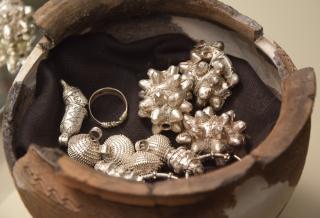Topic
Bio-graphy of a Border Region
Medieval land development led to the creation of border regions, in which the new (e.g. ethnic) substrate overlapped the old. Interdisciplinary investigations of the early history of the Polish-Old Russian border region aim to enable a bio-graphy of the Polish-Old Russian border region.

BIO-graphy of a border region. The early history of the Polish-Old Russian border region in the light of interdisciplinary research
Klaus Zernack (1931–2017) suggested defining different overlapping areas, including ones such as the Germania Slavica (the Slavic area by the Elbe at the borders of the Roman-Germanic empire) as well as the Polonia Ruthenica, that is, the Old Russian areas that were part of the Corona Regni Poloniae (today’s eastern Poland, western Belarus and western Ukraine) from the 14th century onwards.
Research results on the major excavation sites in this region (Czermno, Gródek) were presented between 2016 and 2020. The extraordinary finds (silver jewellery/silken garments/hundreds of lead seals) show that the fortresses in this region were not small frontier strongholds, but rather important centres of contact (gateway cities) along the great road from Kyiv to Regensburg. Further research is aimed at cooperating with representatives of the natural and technical sciences to subject the finds from this region to complex analysis. The new data on the transport of raw materials (lead, slate from Ovruch), the transfer of technology (silver jewellery, glazed ceramics) as well as the living conditions of the population (anthropological studies, including paleogenetic ones) and the geographic conditions of settlement development in individual zones are meant to facilitate a bio-graphy of the Polish-Old Russian border region.

